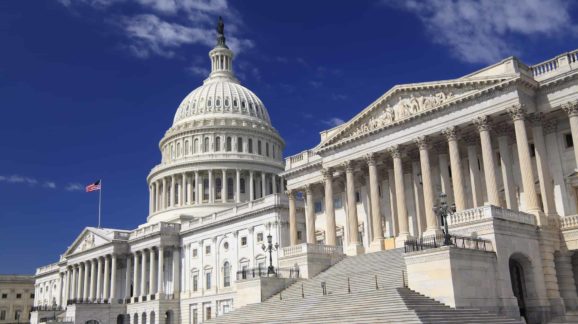How Much Will the Green New Deal Cost Your Family?

 The American Action Forum (AAF) yesterday posted a preliminary analysis of the scope, implications, and costs of the Green New Deal (GND). I can’t wait for the Senate to debate this proposal. As AAF’s analysis shows, the Green New Deal would be financially devastating to millions of middle-income households.
The American Action Forum (AAF) yesterday posted a preliminary analysis of the scope, implications, and costs of the Green New Deal (GND). I can’t wait for the Senate to debate this proposal. As AAF’s analysis shows, the Green New Deal would be financially devastating to millions of middle-income households.
The Green New Deal is a progressive environmental and social policy wish-list, in the form of a sense of Congress resolution. Co-sponsored by Sen. Ed Markey (D-MA) and Rep. Alexandria Ocasio-Cortez (D-NY), the resolution calls for a “new national, social, industrial, and economic mobilization on a scale not seen since World War II and the New Deal.” Major goals include:
- Meeting 100 percent of the power demand in the United States “through clean, renewable, and zero-emission energy sources”
- Eliminating greenhouse gas emissions from U.S. transportation, manufacturing, and agricultural sectors “as much as technologically feasible”
- Upgrading all existing buildings and constructing new buildings to achieve “maximal energy efficiency”
- Guaranteeing a job with a family-sustaining wage, family and medical leave, paid vacations, and retirement security to all people of the United States
- Providing all Americans with adequate housing, high-quality health care, and economic security
The resolution has 68 co-sponsors in the House and 11 in the Senate, none of them Republicans. Seven of the sponsors—Sens. Bernie Sanders (I-VT), Kirstin Gillibrand (D-NY), Kamala Harris (D-CA), Elizabeth Warren (D-MA), Cory Booker (D-NJ), Amy Klobuchar (D-MN), and Rep. Tulsi Gabbard (D-HI)—are declared presidential candidates.
The American Action Forum estimates that, between 2020 and 2029, the energy and environmental components of the Green New Deal would cost $8.3 trillion to $12.3 trillion, or $52,000 to $72,000 per household. The total GND program, including the jobs and “social justice” policies, would cost $51.1 trillion to $92.9 trillion, or $316,010 to $419,010 per household.
Perhaps as significant as what the Green New Deal says is what it does not say. The word “cost” occurs only once—in a provision directing the U.S. government to “take into account the complete environmental and social costs of emissions.” Although emissions from infrastructure, transportation, manufacturing, and agriculture are to be reduced “as much as technologically feasible,” the text nowhere states or implies that emission reductions must be cost effective, commercially viable, or reasonably affordable.
Although staggering, the costs in AAF’s chart above include only the direct expenditures needed to achieve the Green New Deal’s goals. A separate analysis would be required to estimate the GND’s impacts on the growth and performance of the U.S. economy.
The AAF analysts conclude with a warning about the less quantifiable perils of centralized planning and World War II-style “mobilization” of the nation’s industries and resources:
The Green New Deal is clearly very expensive. Its further expansion of the federal government’s role in some of the most basic decisions of daily life, however, would likely have a more lasting and damaging impact than its enormous price tag.